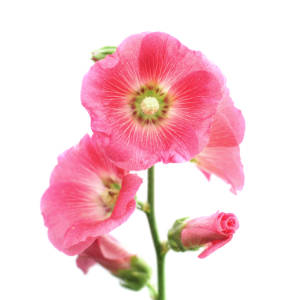Edible Flowers Category

Edible flowers make colorful garnishes, and some have interesting flavors. Not all flowers, though, are edible, so make sure any flowers you serve are safe to eat. Dinner guests tend to assume that everything on a serving platter is edible.
For many flowers, like roses, only the petals are edible, so you must remove the stamen and pistil (the reproductive organs of the flower that the petals surround), along with the sepals (the leaves just under the petals). Others, like pansies, can be cut off intact at the top of the stem and eaten.
Since flowers from gardens, nurseries, or florists may have been treated with pesticides, it's best to grow your own or buy them at stores or farmers' markets.
Varieties:
borage
Borage is best known for its attractive blue flowers, but Europeans sometimes use the leaves as an herb in salads and soups. Borage has a mild flavor that's been likened to that of cucumbers. The leaves are covered with prickly, throat-catching hairs, so it's best to either blanch them or chop them finely before serving them.
Learn morecarnation
Carnations have a peppery flavor. While they're edible, some people may have an allergic reaction to them.
Learn moredianthus
These have a clove-like flavor. Some people may have an alergic reaction to dianthus.
Learn moreJamaica
Jamaica is another name for the hibiscus flower. Tea made from Jamaica flowers is red, tart and is high in vitamin C. Substitutes: Red Zinger tea
Learn moresquash blossoms
These make exquisite garnishes, but they can also be stuffed with fillings and fried, or else sautéed very briefly and put into omelettes or quesadillas. The best source of the blossoms is a garden, but non-gardeners can sometimes find them in farmers' markets or specialty markets. They don't store well, so try to use the blossoms soon after you get them.
Learn more
































































































































































































































































































































































